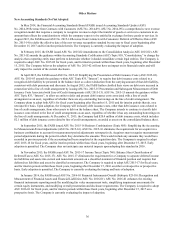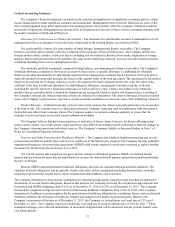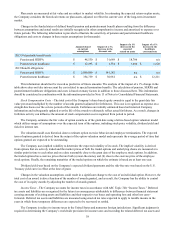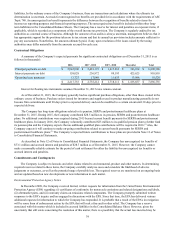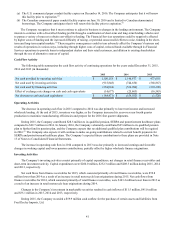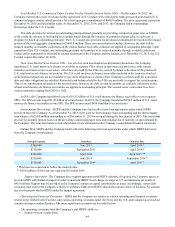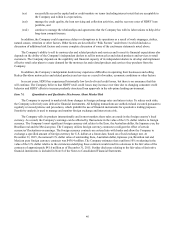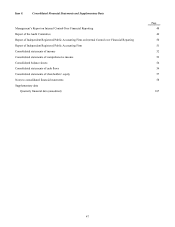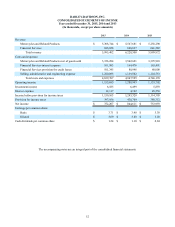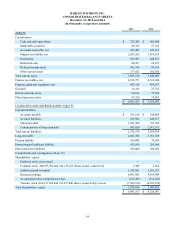Harley Davidson 2015 Annual Report Download - page 45
Download and view the complete annual report
Please find page 45 of the 2015 Harley Davidson annual report below. You can navigate through the pages in the report by either clicking on the pages listed below, or by using the keyword search tool below to find specific information within the annual report.45
• participate in certain mergers, consolidations, liquidations or dissolutions; and
• purchase or hold margin stock.
Under the current financial covenants of the Global Credit Facilities, the consolidated debt to equity ratio of HDFS
cannot exceed 10.0 to 1.0 as of the end of any fiscal quarter. In addition, the ratio of the Company's consolidated debt to the
Company's consolidated debt and equity, in each case excluding the debt of HDFS and its subsidiaries, cannot exceed 0.65 to
1.0 as of the end of any fiscal quarter. No financial covenants are required under the Notes or the U.S. or Canadian asset-backed
commercial paper conduit facilities.
At December 31, 2015, 2014 and 2013, HDFS and the Company remained in compliance with all of the existing
covenants.
Cautionary Statements
The Company’s ability to meet the targets and expectations noted depends upon, among other factors, the Company’s
ability to:
(i) execute its business strategy,
(ii) manage through changes in general economic conditions, including changing capital, credit and retail
markets, and political events,
(iii) accurately estimate and adjust to fluctuations in foreign currency exchange rates, interest rates and
commodity prices,
(iv) continue to develop the capabilities of the Company's dealers and manage the risks that the Company's
independent dealers may have difficulty obtaining capital and managing through changing economic
conditions and consumer demand,
(v) prevent a cybersecurity breach involving consumer, employee, dealer, supplier or Company data and respond
to evolving regulatory requirements regarding data security,
(vi) drive demand by executing the Company's marketing strategy of appealing to and growing sales to multi-
generational and multi-cultural customers worldwide in an increasingly competitive marketplace,
(vii) develop and introduce products, services and experiences that are successful in the marketplace,
(viii) manage risks that arise through expanding international manufacturing, operations and sales,
(ix) manage through the effects inconsistent and unpredictable weather patterns may have on retail sales of
motorcycles,
(x) balance production volumes for the Company's new motorcycles with consumer demand, including in
circumstances where competitors may be supplying new motorcycles to the market in excess of demand at
reduced prices,
(xi) manage the impact that prices for and supply of used motorcycles may have on retail sales of new
motorcycles,
(xii) manage changes and prepare for requirements in legislative and regulatory environments for its products,
services and operations,
(xiii) manage supply chain issues, including quality issues and any unexpected interruptions or price increases
caused by raw material shortages or natural disasters,
(xiv) prevent and detect any issues with the Company's motorcycles or associated manufacturing processes to
avoid delays in new model launches, recall campaigns, increased warranty costs or litigation and adverse
effects on the Company's reputation and brand strength,
(xv) manage the Company's exposure to product liability claims and commercial or contractual disputes,
(xvi) implement and manage enterprise-wide information technology solutions, including solutions at its
manufacturing facilities,
(xvii) execute its flexible production strategy,
(xviii) adjust to healthcare inflation and reform, pension reform and tax changes,
(xix) retain and attract talented employees,



